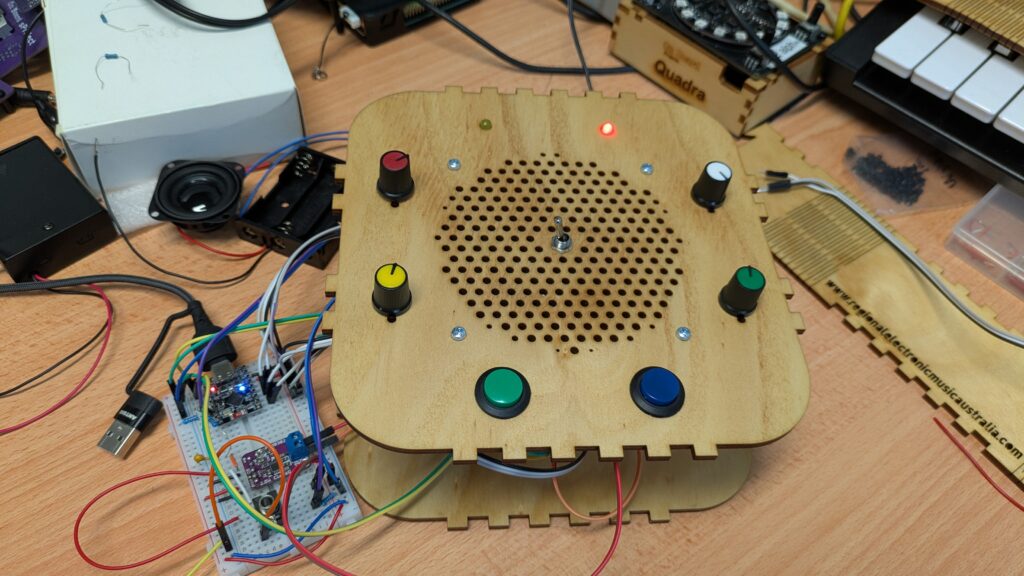The LoFi Sequencer is an algorithmic sequencer and monophonic synthesiser with controls for pitch, timbre, density, and generative algorithm settings housed in a laser-cut box. It is a simple DIY device to be made at home or at community workshops. Designed to be portable, the sequencer features an inbuilt speaker, an output jack and is battery operated. It is built around an ESP32 microcontroller (pre-programmed and ready to go) using the simple M8 audio synthesis libraries I developed. It is breadboard-based for ease of assembly. The physical design and enclosure is co-developed with John Ferguson as part of our series of LoFi DIY music machines.

The LoFi Sequencer combines digital and physical media into a postdigital device that both leverages the capabilities of modern digital fabrication and leans into the low fidelity aesthetic of 8-bit digital synthesis on low-cost microprocessors. Here is a short video of the developing version in action.
The sequencer is also a simple subtractive synthesizer. Front panel controls change both the sound (oscillator, filter and amplitude envelope) and the sequence in real time. Sequence variations are depicted in the diagram below.

Workshops building the LoFi sampler have been held at Castlemaine and Melbourne, in Australia, as part of a research project exploring regional electronic music communities. Workshops have resulted in performances using several of the instruments, which can combine to form interesting music created from overlapping loop-based sequences.

The documents to support making the LoFi Sequencer are available at an open source GitHub repository.

